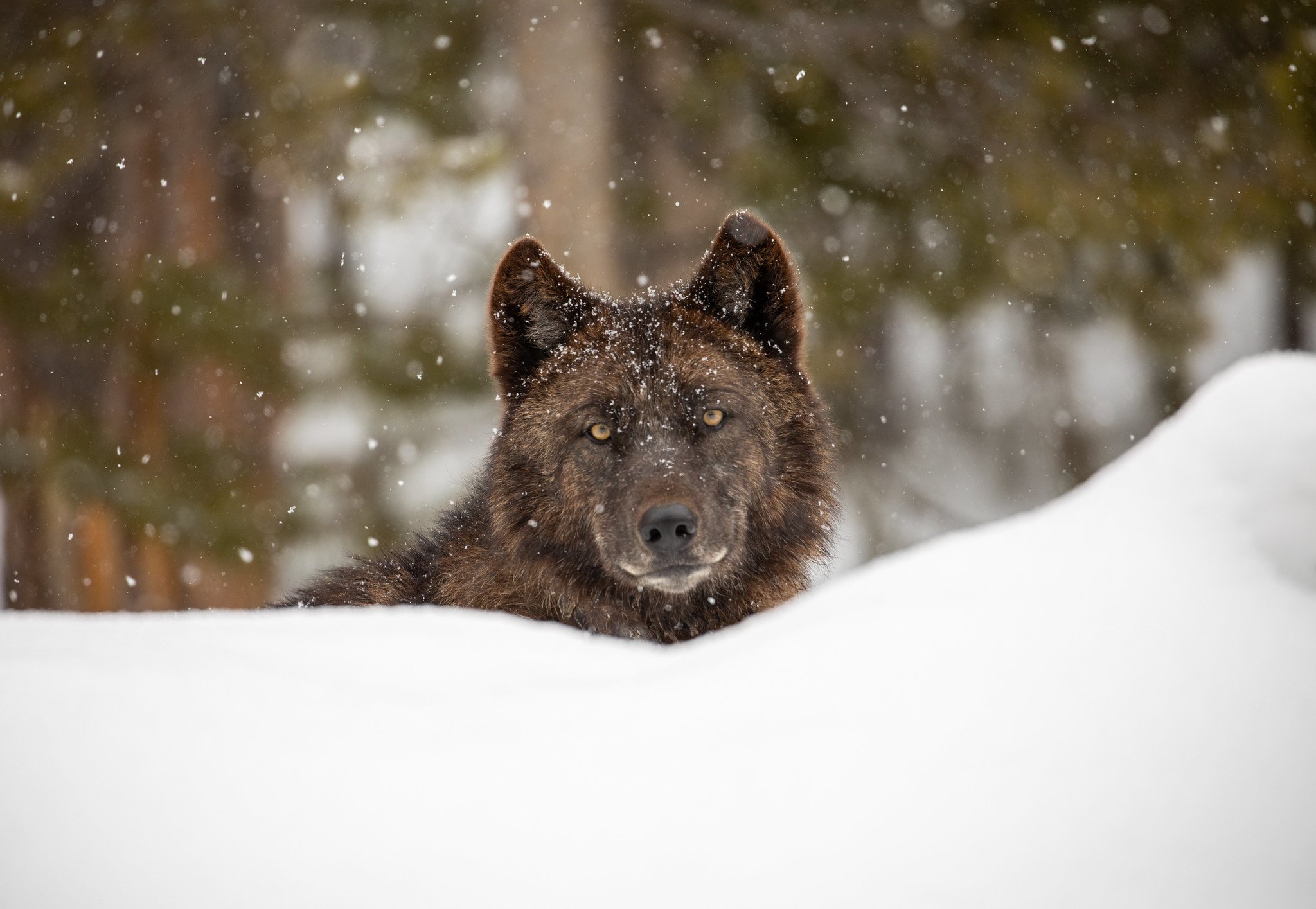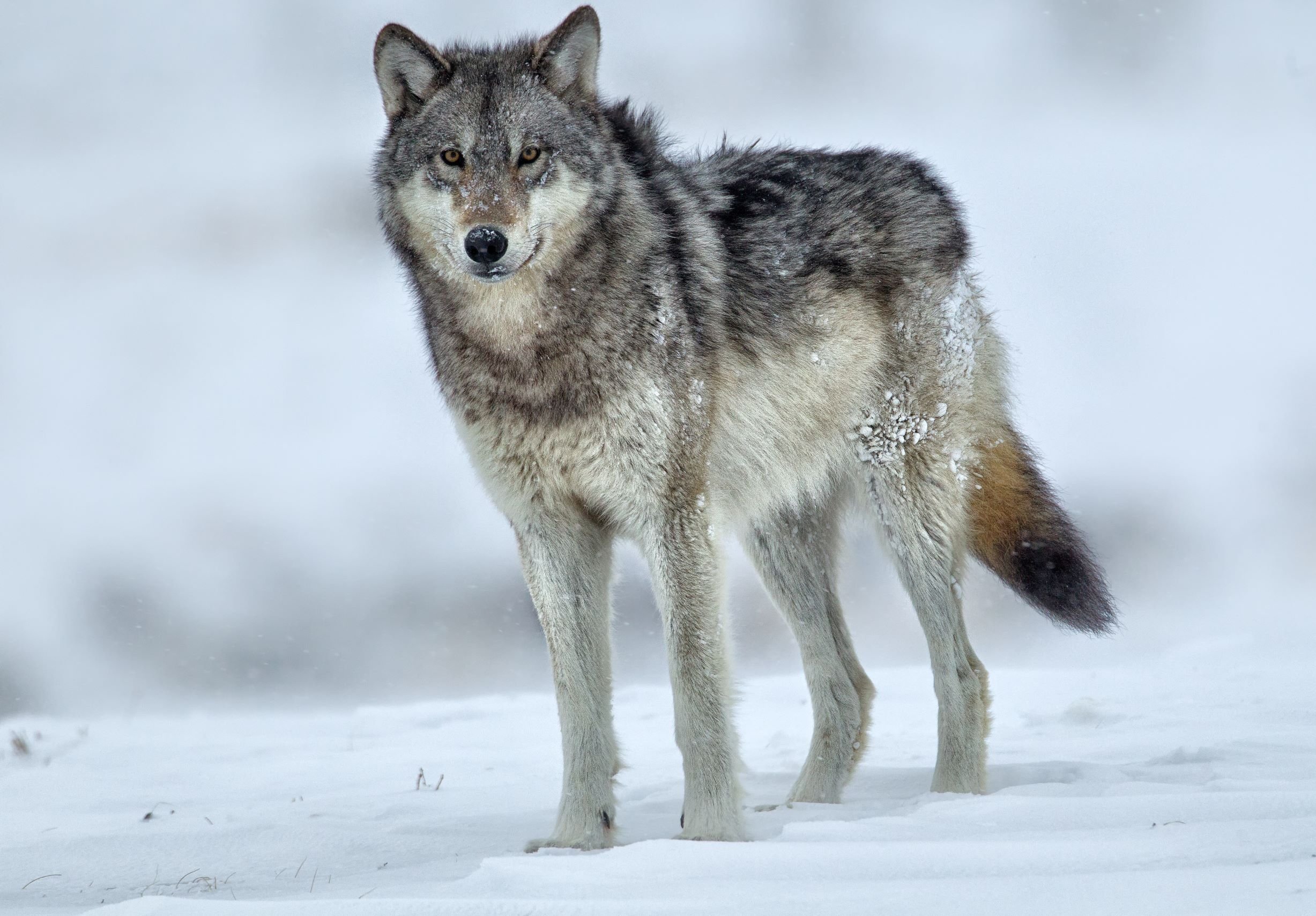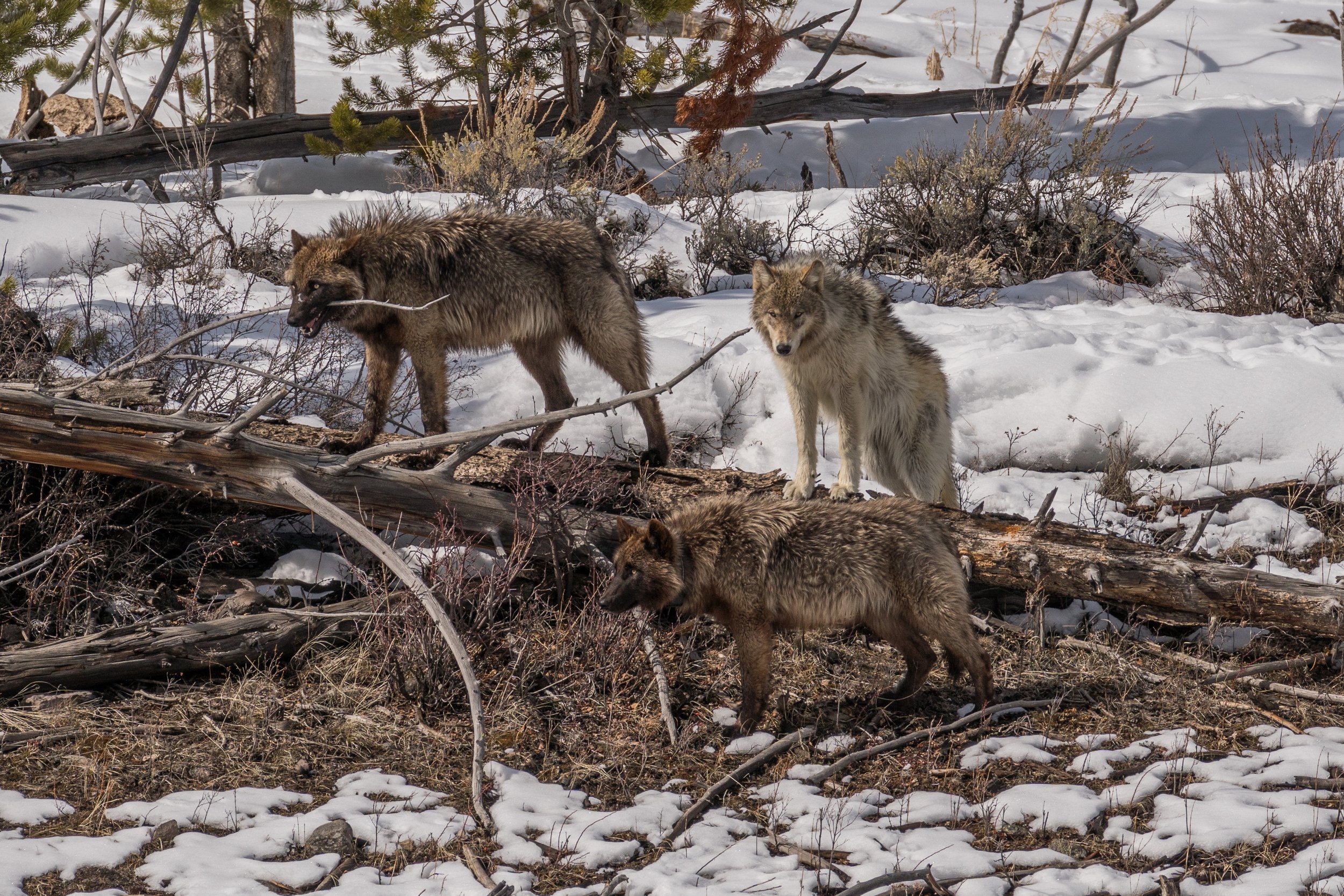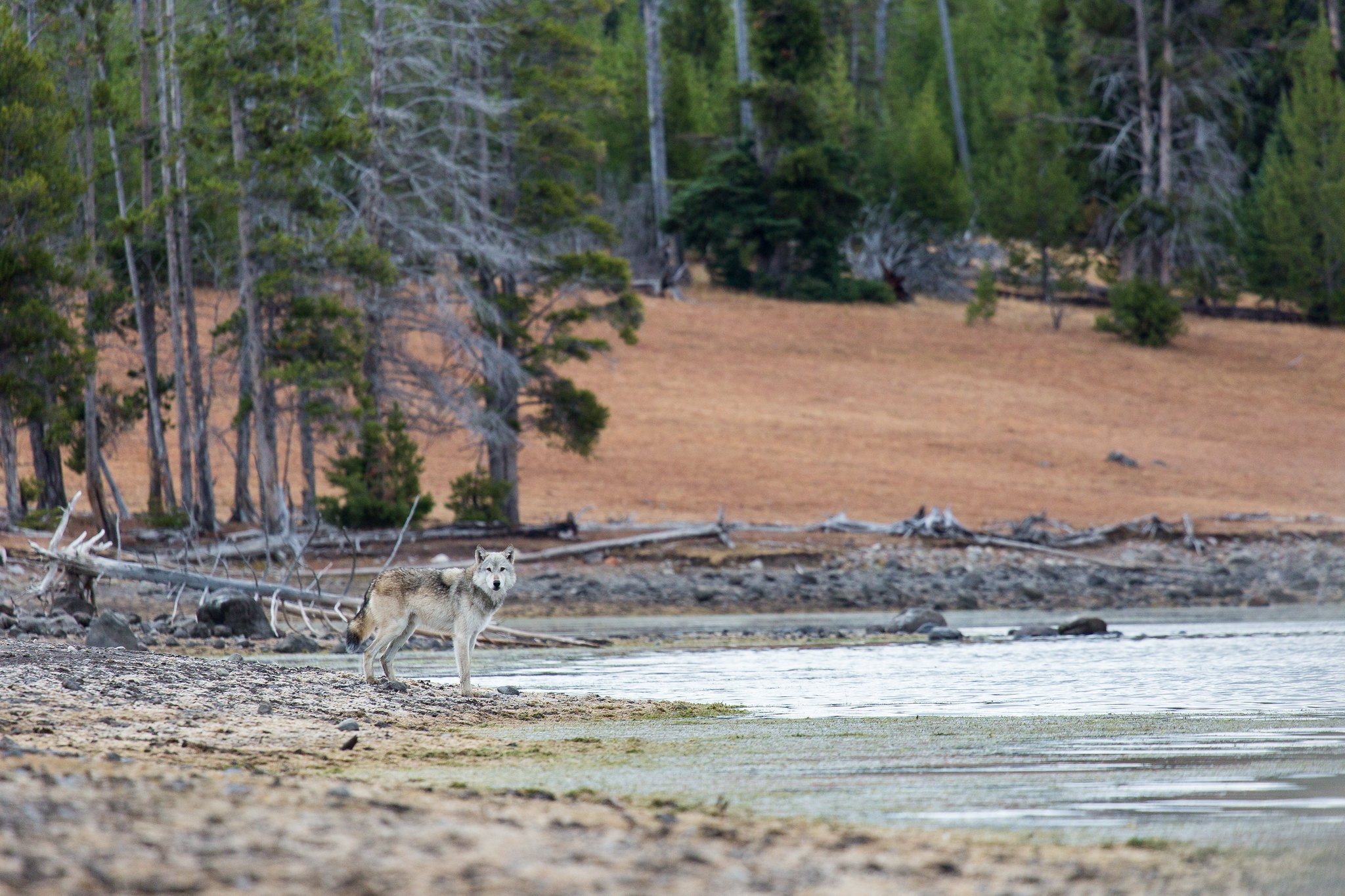
Protecting Wolves
A Conservation Success Story for the Ages
For many people, seeing a wolf in Greater Yellowstone is the pinnacle of wildlife-watching. With intense eyes and hues of fur ranging from smokey grey to inky black, these canids have captured hearts, inspired conservationists, and jumpstarted a local tourism economy.
After loss of prey and aggressive predator control eliminated wolves from the landscape in the early 20th century, the Yellowstone National Park and Central Idaho wolf reintroductions brought this keystone species back to the Northern Rockies in the mid 1990s. Today, wolves provide a significant economic benefit to Greater Yellowstone’s economy through wildlife-watching and tourism, generating an estimated $82 million annually.
Securing the Future
Montana wolves were delisted from the Endangered Species Act in 2011 after it was determined their population was robust enough not to warrant further federal protections. Since then, hunting and trapping quotas have been in place for the lands immediately north of Yellowstone to ensure limited wolf mortality on the park boundary. These quotas represented a compromise between wolf hunters and trappers, wildlife viewers, and locals whose livelihoods depend on wildlife tourism.
Despite the success of this common ground approach, unsound wolf management proposals are still a frequent challenge.
Anti-wildlife bills focused on wolves also make their way into the Idaho, Montana, and Wyoming state legislatures. Legislators frequently put forth legislation with substantial implications for wolves, undermining the role of state wildlife agencies in making management decisions, and exacerbating alarmist anti-carnivore rhetoric that persists throughout the region.
Finding Science-Based Solutions and Building Tolerance
Yellowstone National Park’s wolves represent an iconic wildlife restoration story in the Northern Rockies and contribute tremendous ecological, scientific, and economic value to Greater Yellowstone.
Despite problematic wolf management policies, wolves are abundant in the region, and now it’s time to cement their future.
The Greater Yellowstone Coalition supported wolf reintroduction in the mid-1990s, as well as subsequent recovery efforts. Now, we collaborate with diverse stakeholders to find innovative solutions to ensure the long-term stability of Greater Yellowstone’s wolf population. Our team is committed to advocating for low hunting quotas north of Yellowstone and science-based, ethical wolf management driven by wildlife professionals rather than politicians.
Our wolf conservation work includes:
Advocating to restore low hunting quotas on the northern boundary of the park
Montana Fish and Wildlife Commission allowed an unlimited hunt of wolves in the management units north of Yellowstone, we found this method to be too aggressive and without scientific rationale. We teamed up with the Wild Livelihoods coalition, made up of businesses and individuals who rely on income wolf-watching brings to the region, to complete a study on the importance of wolves and other wildlife to the local economy. Our team and our supporters also advocated for a reinstatement of low hunting quotas with Montana Fish, Wildlife & Parks and the Montana Fish and Wildlife Commission.
Monitoring state legislative sessions to oppose bad wolf bills
During state legislative sessions, our wildlife advocates keep a careful eye on bills being introduced. If a bill proposes wildlife management actions that are non-scientific, do not support the North American Model of Wildlife Conservation, and do not protect Yellowstone wolves, we engage in a number of tactics to try to stop the bill from becoming law. This includes providing testimony in hearings, coordinating with partners on strategies, and activating our Greater Yellowstone base of advocates to reach out to their representatives.
Collaborating with ranchers to reduce conflicts with wolves and promote coexistence
When we engage the wide range of people who care about this ecosystem, we can create groundbreaking solutions to conflict. Since ranching operations can be susceptible to depredation from wolves, we invest in on-the-ground solutions like range riding that help reduce conflict. This keeps wolves out of trouble and makes it easier for people to live on the landscape alongside them.
Read about our latest wolf conservation work.







